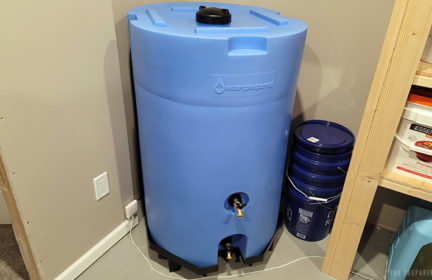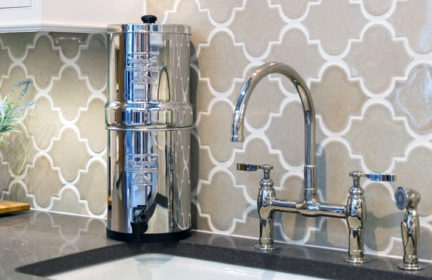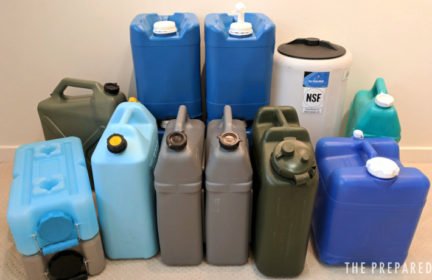Water storage tanks
Hi All
Thinking about getting some potable drinking water storage tanks installed in my home – any suggestions on how I should go about this and where I should look (UK based).
-
Comments (6)
-
John AdamaStaff - July 28, 2020
What kinds of questions come to mind about this? We’re writing an article on it soon — I’m coordinating today with some of the vendors sending in review samples of 55-200 gallon containers, for example.
Do you have space around your home to put a standard 55 gallon barrel? Like this https://waterprepared.com/products/blue-55-gallon-water-storage-tank (one of the things we’ll review)
-
proco84 - July 28, 2020
Thanks John – my main question wasn’t so much space but freshness – would the water not go stagnant it if was kept for any length of time – and how would you drain it?
-
-
hikermor - July 28, 2020
I am currntly storing at last 50 gllons of water at my home – all in modeest size containers of no more than 2 gllons capacity,typically thre liters or so. This is much easier to handle than a single massive tank and its weight. This way water is reasoably portable and storable in odd, out of the way places.
I find this typeofstorage much better than a massive tank. I have had no problems with “stagnation.” On one ocasion I left a gallon of water at an inaccessible location for over a year, including a bitterly cold winter, and it was just fine when consumed. just keep the microbes and critters out and I believe thee watr will last indefinitely – best if stored in a dark location.
-
Barb LeeContributor - July 28, 2020
We have a 3500 gallon rainwater tank, which we installed after seeing the extensive use of tanks in Australia. If you search rainwater harvesting, there is a lot of information available about setting up a system. Our system catches rain off our barn roof. The roof is metal. It flows into the gutter, thence into the collection system, which first begins with a “roof washer”. It is a device that diverts the first ten gallons of water into a cylinder, which slowly drains out the bottom, thereby “washing” the first rainfall. The tank is plumbed so that water enters at the bottom. There is a float that keeps the outflow 4″ below the surface, where the water is cleanest. A “biological filter” forms at the bottom of the tank. Our water is withdrawn by means of a small electric pump (though it will siphon). It first goes through a sediment filter (5 microns, I think). We use 5 gallon jugs which contain a tablespoon of chlorine bleach. After the water has contacted the bleach for awhile, we put it through a tabletop gravity charcoal filter. The brand is Berkey, which is a US brand. We then consider it pure. However I would never consider the water actually stagnant. I’ve drunk the raw water from the hose many times, and we water the horses with it all winter. But no point in taking chances.
When we first set up the system, the information we had said not to clean the tank to avoid disturbing the biological filter. However since that time, I’ve read advice to clean the tank annually. So this year, just before our first big rain in the fall (we live in a typically high rainfall area), we will drain it down and pressure wash it. It usually fills to overflowing within the first 3″ of rainfall. (I’m not sure how many square feet of roof there are).
A nice extra feature is that there is a remote sensor on top of the tank that transmits to a receiver in the barn that tells us the water level (I need to replace it).
Australia is a provider of many rainwater harvesting technologies.
In some states in America, rainwater harvesting is illegal. In other areas it may be subject to local codes.
-
Mike Hill - July 28, 2020
Your system sounds great especially the sensor that makes it smart.
I was curious and dug up this list of laws by state for harvesting:
https://4perfectwater.com/blog/rainwater-harvesting-laws/
Looks like Colorado residents may have a hard time.
-
-
myramehta - August 19, 2024
Hi there,
For potable drinking water storage tanks, it’s crucial to select a high-quality and reliable product to ensure safety and efficiency. While we don’t provide water tanks in the UK, you might find useful information on how to choose the best water tanks at Astral water tanks. Their guidelines can help you understand what to look for in terms of material, size, and features.
When choosing a water tank, consider factors like the tank’s material (e.g., food-grade polyethylene or stainless steel), capacity, and whether it meets relevant health and safety standards. Additionally, look for options with good insulation and durability to suit your local climate and water needs.
For UK-specific options, I recommend checking local suppliers or consulting with a professional installer who can provide tailored advice based on your specific requirements and ensure compliance with local regulations.
Best of luck with your installation!
-
- Fun ways to teach kids outdoor/survival skills - 4 days ago
- News for the week of 2025-06-30 - 5 days ago
- News for the week of 2025-06-23 - 2 weeks ago
- News for the week of 2025-06-16 - 2 weeks ago
- News for the week of 2025-06-09 - 4 weeks ago
This forum is heavily moderated to keep things valuable to as many people as possible. Full community policies are here. The basics:
- 1. Be nice to each other.
- 2. Stay focused on prepping.
- 3. Avoid politics, religion, and other arguments.
- 4. No unfounded conspiracies, fake news, etc.
- 5. Debate ideas, not people.


